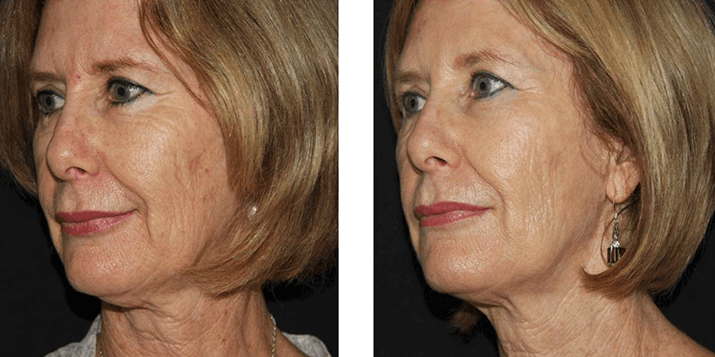
PRP therapy offers a more natural approach to rejuvenating your facial skin by promoting healing and enhancing facial contours. At Orchidia Medical Group, our PRP therapy in Naples, FL, can use your body’s own properties to refresh your facial aesthetics gently and effectively. All of our injections are performed by physicians who bring years of experience to the practice. Our emphasis is on results delivered with a high level of care for each of our patients.
What Is Platelet-Rich Plasma?
Platelet-rich plasma is a golden substance taken from your own blood that contains a high level of platelets, which are little cell fragments that are rich in growth factors. These growth factors help with the healing and regeneration of the tissues in our bodies. By isolating and concentrating these healing elements, platelet-rich plasma can enhance the body’s ability to recover.
What Is PRP Therapy and How Does It Work?
PRP therapy involves the extraction of a small amount of your blood, which is then processed to concentrate the platelets into platelet-rich plasma. This plasma is then reinjected into targeted areas of your skin. The concentrated growth factors in the plasma help to accelerate the natural regeneration processes of your skin, aiding in the restoration of a more youthful and refreshed appearance. It can be used in many other applications to speed up healing and reduce inflammation.
Our Uses for PRP
PRP for Facial Rejuvenation
PRP therapy is used to enhance the skin’s texture and tone through natural rejuvenation methods. During a PRP facial, the plasma encourages the renewal of skin cells, resulting in a smoother, more vibrant skin surface. This treatment targets signs of aging by reducing the appearance of fine lines and wrinkles, which offers a refreshed look without synthetic products.
PRP for Collagen Production
Platelet-rich plasma facials promote the production of collagen, a protein in the skin that maintains elasticity and firmness. By stimulating collagen synthesis, this treatment strengthens the skin’s structure and improves its resilience. Regular treatments can lead to a visibly firmer and more youthful skin complexion anywhere that it is injected.
PRP for Tissue Healing
PRP therapy boosts the healing of damaged tissues by enhancing the body’s natural repair processes. It is particularly beneficial in treating dermatological issues where tissue regeneration is needed. It can be used for healing acne scars, reducing the visibility of surgical scars, and speeding up the healing of injuries.
PRP for Joint Repair
PRP for joints is used to alleviate pain and enhance joint function by promoting the repair of cartilage and other tissues. We inject PRP directly into the affected joint, which increases blood flow, reduces inflammation, and improves mobility. Using PRP can reduce the need for oral pain medications and get you back on your feet faster.
What Are the Benefits of Using PRP?
- Uses Substances From Your Body: The body’s own biological material is the foundation of PRP injections, minimizing the risk of allergic reactions or rejection that can occur with foreign substances.
- Reduces Inflammation: Through the targeted delivery of growth factors, PRP therapy helps to diminish inflammation. This can be helpful both for medical applications to diminish pain and speed healing and alongside other cosmetic treatments to speed up healing and improve results.
- Has a Short Recovery Time: PRP treatment involves minimal downtime and can be scheduled right in the middle of a busy day.
- Offers a Medication-Free Treatment: PRP therapy does not rely on pharmaceuticals for its effectiveness. Instead, it uses the natural regenerative properties of plasma, which can be perfect for those wishing to avoid medications.
Before and After PRP Therapy
FAQs About PRP Therapy
How Many PRP Treatments Will I Need?
The number of PRP therapy sessions can range from three to six treatments, but this all depends on the specific condition being addressed and the patient’s response to therapy. For cosmetic applications like a PRP facial treatment, sessions are often spaced about a month apart to allow natural collagen production to occur. It’s important for patients to consult with their injector to tailor the number and frequency of treatments to their unique needs.
How Long Does It Take to See Results From PRP Therapy?
Results from PRP injections can typically be seen within a few weeks after treatment, as the growth factors begin to stimulate the healing and regenerative processes. The full effects, particularly in aesthetic treatments, tend to become more visible and improve over several months as the body produces new collagen and skin cells.
Is PRP Therapy Covered by Insurance?
Coverage for platelet-rich plasma treatments varies widely by insurance providers and depends on the purpose of the therapy. While PRP used for cosmetic purposes is generally not covered, some insurance plans may cover PRP for orthopedic conditions where it is deemed medically necessary.
Who Is a Good Candidate for PRP Therapy?
A good candidate for PRP therapy is typically someone in good health who is looking for a less invasive option. Individuals with chronic diseases, certain blood disorders, or acute infections may not be suitable for this treatment. If you think the treatment might be right for you, you can set up a consultation to go over your medical history and your treatment goals.
Call Us to Learn More About PRP Therapy in Naples, FL
At Orchidia Medical Group, your well-being is at the center of everything we do, ensuring that PRP therapy is conducted with the utmost care and professionalism. We believe that enhancing your health naturally through our PRP therapy in Naples, FL, aligns with your wellness goals and our commitment to effective care. To learn more about how this treatment can benefit you, please contact us through our online form or call us at (239) 333-8809.




